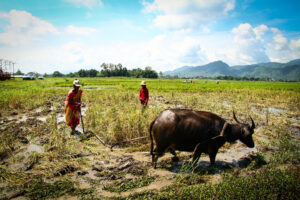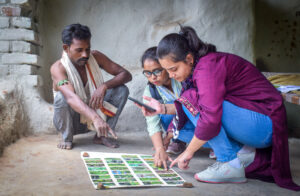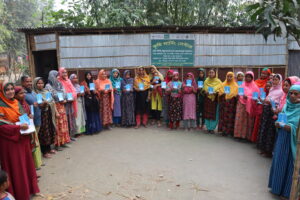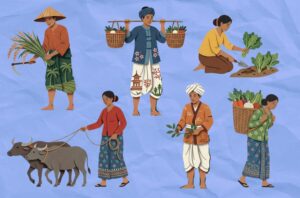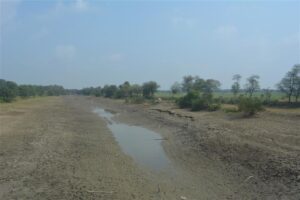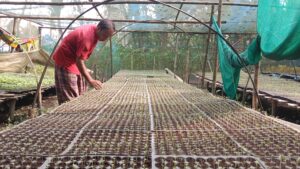by Afreen Khan1, Mamatha Goundla2, Ranjitha Puskur1
1 International Rice Research Institute
2Centre for Sustainable Agriculture
Introduction
Seeds are vital to agriculture, affecting productivity, climate resilience, nutritional outcomes, and biodiversity (Kramer and Galiè, 2020). The choice of seed is not just about yield or technical performance. It is a negotiation between tradition and innovation, between household food needs, market incentives and often, between men’s decisions and women’s lived knowledge. While agriculture in India is increasingly shaped by modern technologies and market priorities, the question of who chooses what seed and why remains deeply contextual and gendered.
In most farming households, men typically interact with dealers, access subsidies, and decide on commercial crops. Women, however, spend their days sowing, weeding, harvesting, cooking, and saving seed, carry an intimate understanding of which varieties withstand drought, survive poor rains, or cook well. Excluding them from these decisions, sidelines half of the farming population and risks losing traits critical for food security (Puskur, 2021).
To unpack these dynamics, IRRI and Centre for Sustainable Agriculture (CSA) conducted a study in 2024 across 20 villages in 15 districts of Andhra Pradesh (AP) and Telangana which are not just rice bowls of India but are also critical seed landscapes for a wide range of crops – from rice, maize, cotton to pulses, millets and vegetables. Together they supply about 85% of India’s hybrid rice seed needs, especially from districts like Karimnagar, making these states critical nodes in seed system. We explored varietal decision-making, seed access pathways, and the associated knowledge systems in a qualitative study engaging 390 farmers (170 women and 220 men) through 21 gender-segregated Focus Group Discussions (FGDs).
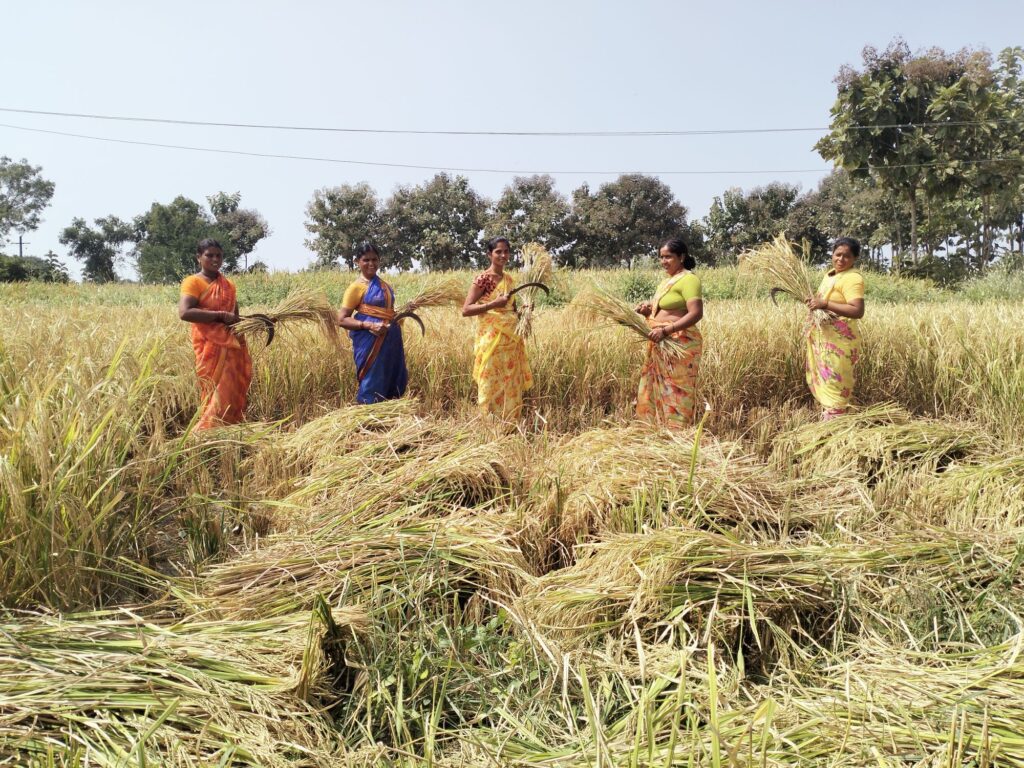
Why varietal and seed choices matter?
The choice of seed is a profound decision, determining a harvest’s yield, nutritional value, and resilience. It is a calculation of what the season might bring, what the family will eat, and what the market might demand. But here’s the catch: not everyone in the household has an equal say. Seed and varietal choices reflect who has power, knowledge, and who is heard in the household and community. And this is where gender becomes central. Men and women value different traits. Women emphasize storability, cooking quality, and resilience under low inputs; men often focus on yield, market prices, and subsidies (Gartaula et al., 2024).
“I’ve been saving seeds of different varieties from my mother’s time. I know which varieties store longer, which cook well, which survive in poor rain. But when a new variety comes from the dealer, it’s my husband who decides if we will try it or not. No one thinks we understand such things.”
— 35-year-old woman, Vilasnagar village, Rajanna Sircilla District, Telangana
This reflection captures the essence of women’s simultaneous centrality and marginalization – central to seed management, marginal in decisions.
What drives farmers choices?
Farmers make seed and variety related decisions based on a mix of experience, observation, peer networks, and local markets. Across the FGDs in AP and Telangana, three major factors consistently emerged as the most influential in shaping these decisions.
- Performance of variety in previous seasons
- Recommendations of the local seed dealers
- Knowledge and experience sharing among farmers and peer advice
These findings highlight a system built on experiential learning and relational trust. The choices reflect a blend of learning by doing collective observations and reflection and adaptive strategies based on perceived success in comparable fields or neighbouring plots. A good harvest or a failed one – becomes the most powerful reference point, often outweighing branding, or technical advice.
Women’s seed choices are rooted in the functional demands of the household and preservation of agrobiodiversity. Their decisions revolve around what can be saved, cooked, or exchanged locally. They exercise greater autonomy in varietal & seed decision-making for crops like millets, pulses, oilseeds, and backyard vegetables – often called women crops. Their criteria often include:
- Suitability to local soils and low input farming
- Storability and pest resistance
- Taste, cooking quality and nutrition
- Cultural familiarity and culinary relevance
- Potential for saving seeds for the next season
These factors reflect a conservation-oriented mindset, with women acting as custodians of seed diversity and household food security, rather than pure economic agents. On the other hand, in market-oriented crops such as paddy, cotton, maize, hybrid vegetables, and chili, the decision space for women contracts. Men dominate here, not necessarily because of expertise, but due to their access to markets, credit, and external networks. Varietal decisions in these crops are shaped by:
- Anticipated market prices and trader preferences
- Availability of subsidies or promotional schemes
- Influence of seed company representatives and input dealers
- Credit-based purchases, often controlled by men family members
While in most cases, both men and women reported discussing seed/variety choices, final decisions in commercial crops often rested with men, especially when external transactions or large-scale investments were involved.
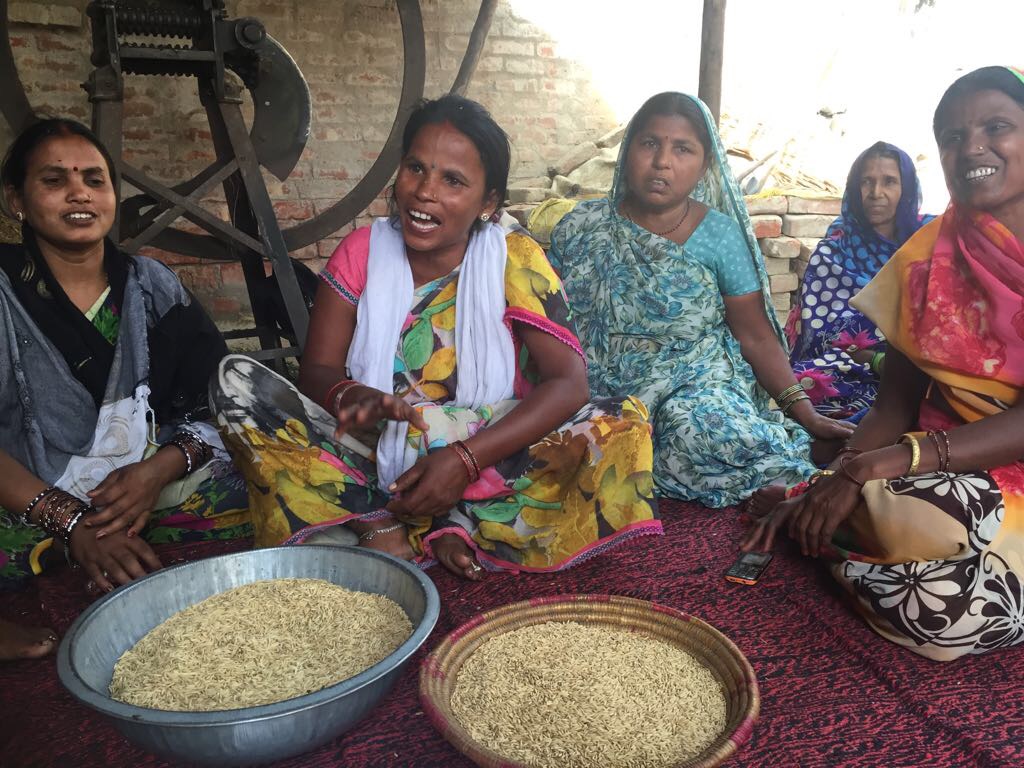
Beyond the Stereotypes
What emerges is a dual system: women manage the invisible, low-risk, low-return seed spaces, while men control the high-risk, market-facing choices that shape household income. This split is not accidental, it reflects entrenched patriarchal norms, unequal access to resources, and differential risk allocation within households. Caste and class deepen the divide: tribal and marginalized caste women often retained autonomy through informal networks, while upper caste women were more excluded.
However, this study does not conform to the observations from previous varietal research that men prioritize market value while women focus primarily on cooking quality or reduced drudgery (Badstue et al.,2022, Teeken et al.,2018). Women farmers expressed clear commercial interests in agriculture, but are constrained by limited mobility, weak market linkages, and exclusion from marketing decisions. Their lack of agency is not because of a lack of ambition or knowledge, but due to structural and social barriers that limit their agency in formal transactions.
“I want to try high yielding varieties that fetch a better price, but I do not go to the dealer shop. My husband does that. Even if I know what I want, I have to wait for him to bring the seed.”
– 32-year-old woman, Chinnakothapalle Village, Kadapa District, AP
Seed choices are complex and an interplay of diverse context-specific factors
Seed choices are shaped not just by agro-ecological suitability but also by trust-based relationships with dealers, neighbours, or peer farmers. Personal rapport and proximity influence who gains access to new varieties, how information circulates, and when experimentation happens. Local input dealers and seed retailers remain a vital link between smallholder farmers, especially women, and the formal seed sector.
- Ecology shapes autonomy and informality
In tribal villages of North Coastal AP, women exercised stronger agency in seed decisions because of two factors: (i) ecological diversity that sustains informal seed systems, (ii) social norms that value women’s roles in farming. Yet this space is fragile. Households are poorer, less integrated into markets, and located in remote areas with limited institutional penetration, leaving informal seed systems and women’s knowledge intact, signaling vulnerability. As market and institutional linkages expand, women’s decision-making space could shrink rather than grow. In non-tribal areas within the same ecological zone, women’s decision-making was far less visible. There is a complex interplay between ecological conditions, local institutions, landholding patterns, and community norms. - Market connectivity expands options but contracts autonomy
In Central Telangana and Rayalaseema, greater market access expanded the varietal options and seed availability, but not for women. Hybrid adoption was framed as progress, yet it reinforced male dominance, with dealers, subsidies, and credit systems controlled by men. Women’s role in saving millet and pulse seeds was vital, but it was described as “helping,” not “deciding”, which highlights how markets can broaden varietal portfolios while constricting women’s agency. - When priorities shape seed choices
In South Telangana, decisions were neither strictly men-led nor women-led. Households described an ongoing negotiation. The final choice often hinged on rainfall, cash in hand, or dealer influence. This shows that decisions are shaped less by fixed gender roles and more by which priorities matter most at the time. - Trust mediates access to innovation
Across sites, farmers repeatedly stressed that “who brings the seed” mattered as much as “what seed it is.” Trusted neighbours, relatives, and local dealers acted as gatekeepers of new varieties. For women, whose mobility and market access are limited, social networks were especially important. But this dependence also reproduced inequality: men interacted with dealers and accessed subsidies directly, while women received information second-hand, if at all. - Gendered information gaps are structural, not incidental
Women described themselves as knowledgeable about taste, storage, and cooking qualities, yet they lacked information about subsidies, release of new hybrids, or demonstrations. This wasn’t just a matter of “not being informed,” it reflects structural exclusion from extension systems that are designed around men farmers and commercial crops. As a result, women’s preferences and needs remained invisible in formal decision-making spaces, even when their seed management knowledge was indispensable.
Ways Forward: Centering Gender in Seed Systems Research and Development
This study foregrounds that seed systems are not only ecological and economic but also social, with gendered negotiations shaping who decides, who benefits, and whose knowledge counts. Building equitable seed systems therefore requires interventions that respond to structural asymmetries, not just surface-level gaps.
To build equitable, inclusive, and sustainable seed systems, the following actions are critical:
- Recognize women as core actors, not peripheral contributors
Women’s seed choices are rooted in everyday realities – food preferences, resource constraints, ecological suitability, and intergenerational knowledge. Policies must shift from viewing women as passive beneficiaries to rights-holders whose voices shape breeding priorities, varietal release, and subsidy allocation. - Support and institutionalize informal systems where women exercise autonomy
Women-led conservation initiatives, community seed banks, and farmer-to-farmer exchange remain crucial spaces of agency. Public policy should formally recognize these as part of the seed system and allocate funding for biodiversity conservation, women-led seed enterprises, and localized varietal trials of crops important for women. - Bridge the gender gap in information and extension access
Women’s limited access to formal extension services perpetuates asymmetries. Women’s limited access to formal extension services can be addressed through women-focused trainings, vernacular mobile advisories, and SHG/FPO-based peer learning. Extension departments should include women in demonstrations and ensure information reaches them directly. - Encourage joint household decision-making
Programs should design activities that encourage couple-based learning, intra-household dialogue, and participatory planning to rebalance decision-making power, making varietal choices more inclusive and considerate of everyone’s needs. - Reform financial and subsidy schemes to prioritize women’s crops
Seed subsidies, credit, and procurement programs often target male landholders and commercial crops. Policies should redesign support to include women-managed crops, such as millets, pulses, and vegetables, and channel seed and credit schemes directly through women’s SHGs and FPOs. Procurement quotas for women’s FPOs can also guarantee market channels and reinforce autonomy. - Redefine varietal evaluation criteria
Varietal release and subsidy policies must include cooking and storage quality, taste, and reduced drudgery as mandatory evaluation criteria, alongside yield and marketability. This ensures that women’s priorities are institutionalized, not sidelined. - Build women’s leadership in seed governance
Women’s representation in FPO boards, seed cooperatives, and policy platforms remains minimal. Building leadership capacity through targeted training, setting representation quotas, and enabling mentorship can ensure that women influence the very systems that affect their livelihoods. - Monitor equity in access, not just adoption
Seed system performance must be measured not only by volumes of seed distributed or adoption rates, but by who accesses seed. Collecting disaggregated data using equity indicators should become standard practice.
This study calls attention to a fundamental question: who decides what varieties are grown, and whose knowledge shapes that decision? A gender-intentional approach is fundamental to building seed systems that are resilient and responsive to the complex realities of farming households. By re-centering women in seed systems as decision-makers and leaders, we can move towards agricultural systems that are not only productive but also more equitable and ecologically rooted. The future of sustainable agriculture depends on making gender, not just an add-on, but a starting point for seed system transformation.

